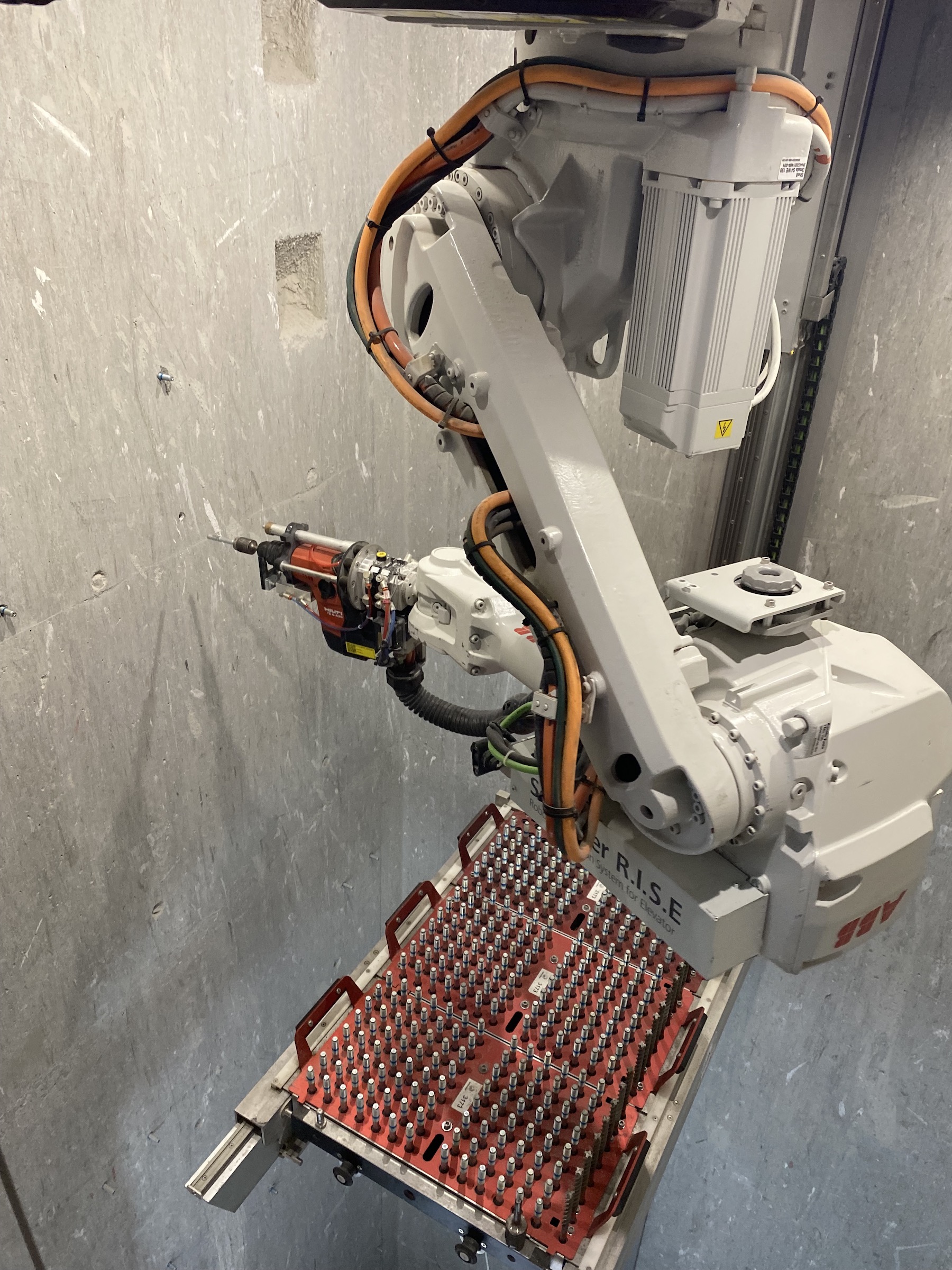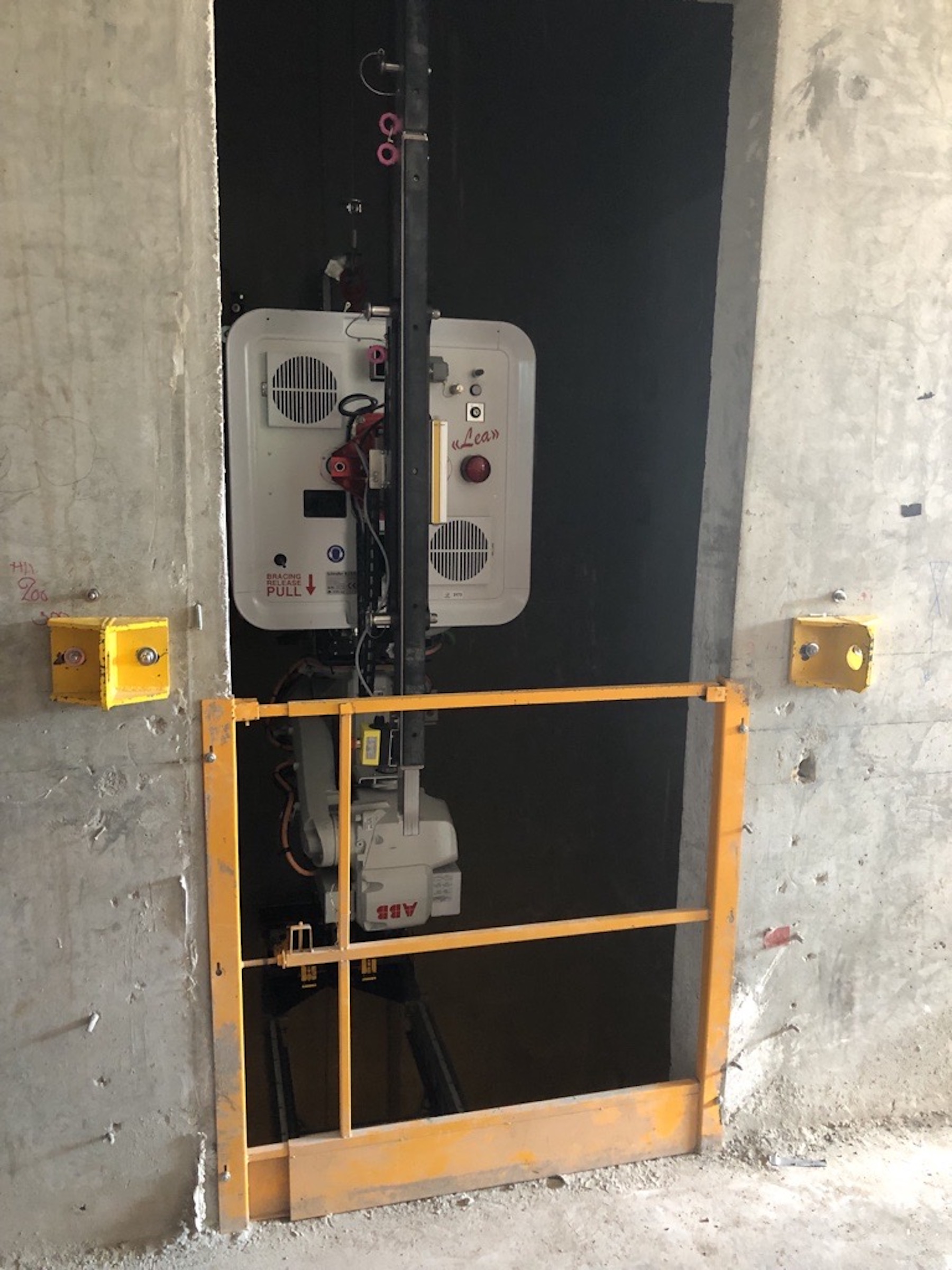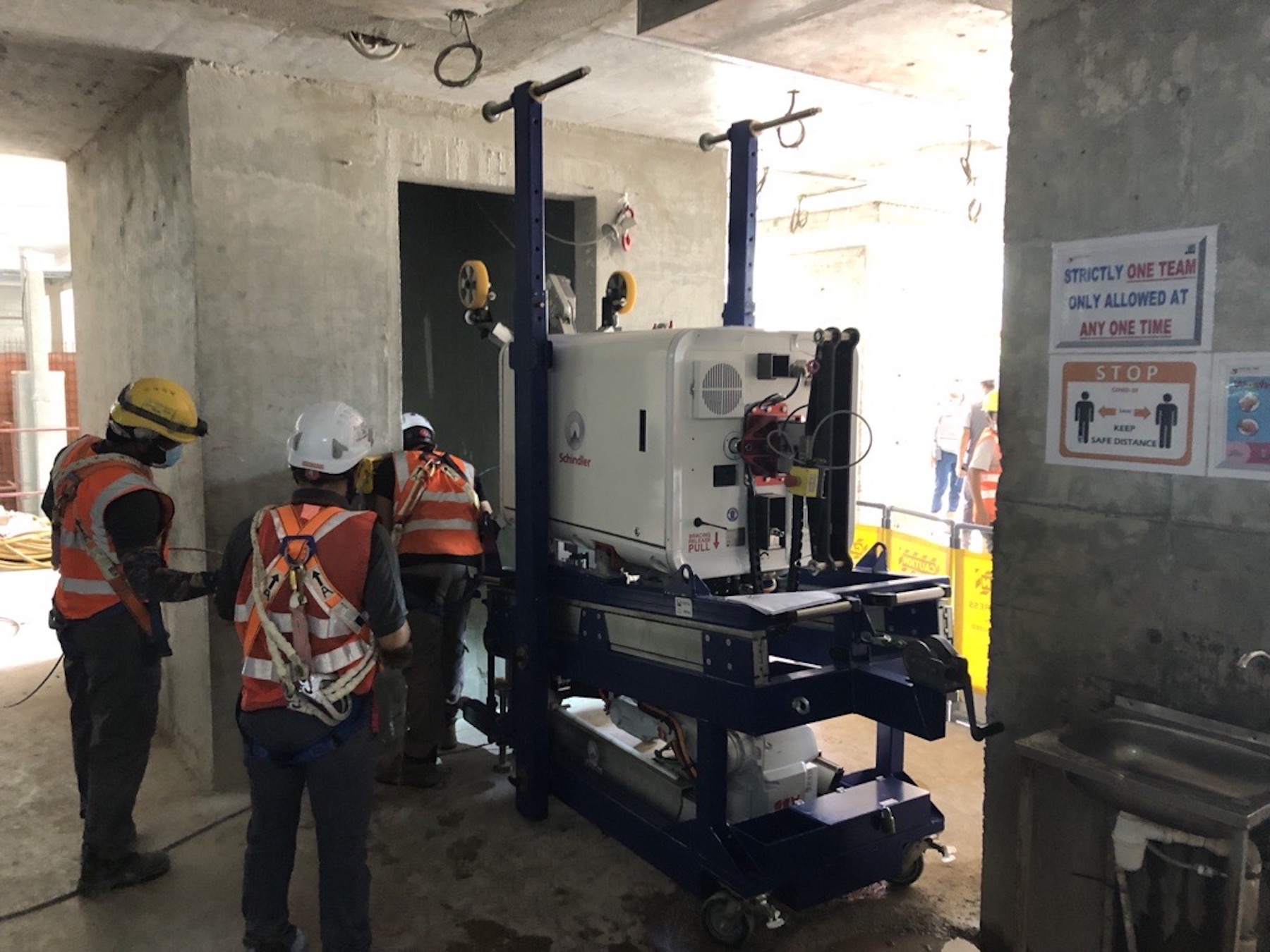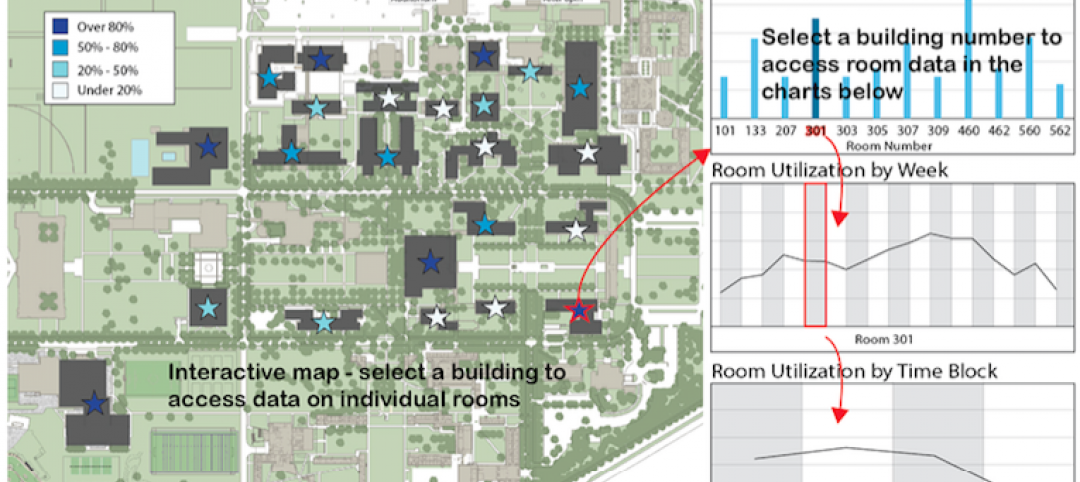Schindler—which manufactures and installs elevators, escalators, and moving walkways—has created a robot called R.I.S.E. (robotic installation system for elevators) to help install lifts in high-rise buildings.
Schindler calls R.I.S.E. the world’s first self-climbing, autonomous robotic system, saying it provides high-level accuracy, better-quality installations, improved planning with BIM integration, and improved worker safety.
As buildings are growing taller and wider, they place increasingly challenging demands on installation schedules. To date, elevators have been installed manually: Mechanics go into the elevator shaft to determine the correct mounting position of guide rail brackets, while drilling holes in the concrete walls to position the anchor bolts that hold the brackets. The same repetitive, manual procedure applies to the installation of elevator landing doors.
Watch R.I.S.E. in action:
With Schindler R.I.S.E, the Switzerland-based company has fully automated this part of the installation process. As a result, the elevator fitting can be done more quickly and accurately, while also improving the health and safety conditions for technicians. The innovation was shortlisted in the Innovation Leaders category of the Swiss Technology Award.
“As buildings are becoming higher and are erected faster, Schindler R.I.S.E is an effective tool in the tall building industry. It makes installations faster, safer, and more accurate, all benefiting our customers and technicians,” Thomas Oetterli, Schindler CEO, said in a statement. “Schindler R.I.S.E also serves as a flagship project for the general introduction of robotics in the construction industry to increase safety, quality, and efficiency on construction sites.”
Schindler R.I.S.E was first deployed in 2017 as a prototype. It then underwent testing on projects including The Circle at Zurich Airport. In 2020, after completing the testing phase, Schindler R.I.S.E was first deployed in Vienna’s TrIIIple project and Warsaw’s Varso Tower. The robot also has been used for Dubai’s Uptown Tower.



Related Stories
AEC Tech | Oct 6, 2017
How professional bias can sabotage industry transformation
Professional bias can take the form of change-resistant thinking that can keep transformational or innovative ambitions at bay. Tech consultant Nate Miller presents three kinds of bias that often emerge when a professional is confronted with new technology.
AEC Tech | Aug 25, 2017
Software cornucopia: Jacksonville Jaguars’ new practice facility showcases the power of computational design
The project team employed Revit, Rhino, Grasshopper, Kangaroo, and a host of other software applications to design and build this uber-complex sports and entertainment facility.
AEC Tech | Aug 24, 2017
Big Data helps space optimization, but barriers remain
Space optimization is a big issue on many university campuses, as schools face increasing financial constraints, writes Hanbury’s Jimmy Stevens.
Lighting | Aug 2, 2017
Dynamic white lighting mimics daylighting
By varying an LED luminaire’s color temperature, it is possible to mimic daylighting, to some extent, and the natural circadian rhythms that accompany it, writes DLR Group’s Sean Avery.
Office Buildings | Jul 20, 2017
SGA uses virtual design and construction technology to redevelop N.Y. building into modern offices
287 Park Avenue South is a nine-story Classical Revival building previously known as the United Charities Building.
Accelerate Live! | Jul 6, 2017
Watch all 20 Accelerate Live! talks on demand
BD+C’s inaugural AEC innovation conference, Accelerate Live! (May 11, Chicago), featured talks on machine learning, AI, gaming in construction, maker culture, and health-generating buildings.
| Jun 13, 2017
Accelerate Live! talk: Is the road to the future the path of least resistance? Sasha Reed, Bluebeam (sponsored)
Bluebeam’s Sasha Reed discusses why AEC leaders should give their teams permission to responsibly break things and create ecosystems of people, process, and technology.
| Jun 13, 2017
Accelerate Live! talk: 3D laser scanning for the project lifecycle, FARO Technologies (sponsored)
Brent Slawnikowski of FARO Technologies and Jennifer Suerth of Pepper Construction discuss how implementation of laser scanning has helped Pepper become more successful in the completion of their projects.
| Jun 13, 2017
Accelerate Live! talk: Incubating innovation through R&D and product development, Jonatan Schumacher, Thornton Tomasetti
Thornton Tomasetti’s Jonatan Schumacher presents the firm’s business model for developing, incubating, and delivering cutting-edge tools and solutions for the firm, and the greater AEC market.
| Jun 13, 2017
Accelerate Live! talk: The future of computational design, Ben Juckes, Yazdani Studio of CannonDesign
Yazdani’s Ben Juckes discusses the firm’s tech-centric culture, where scripting has become an every-project occurrence and each designer regularly works with computational tools as part of their basic toolset.












